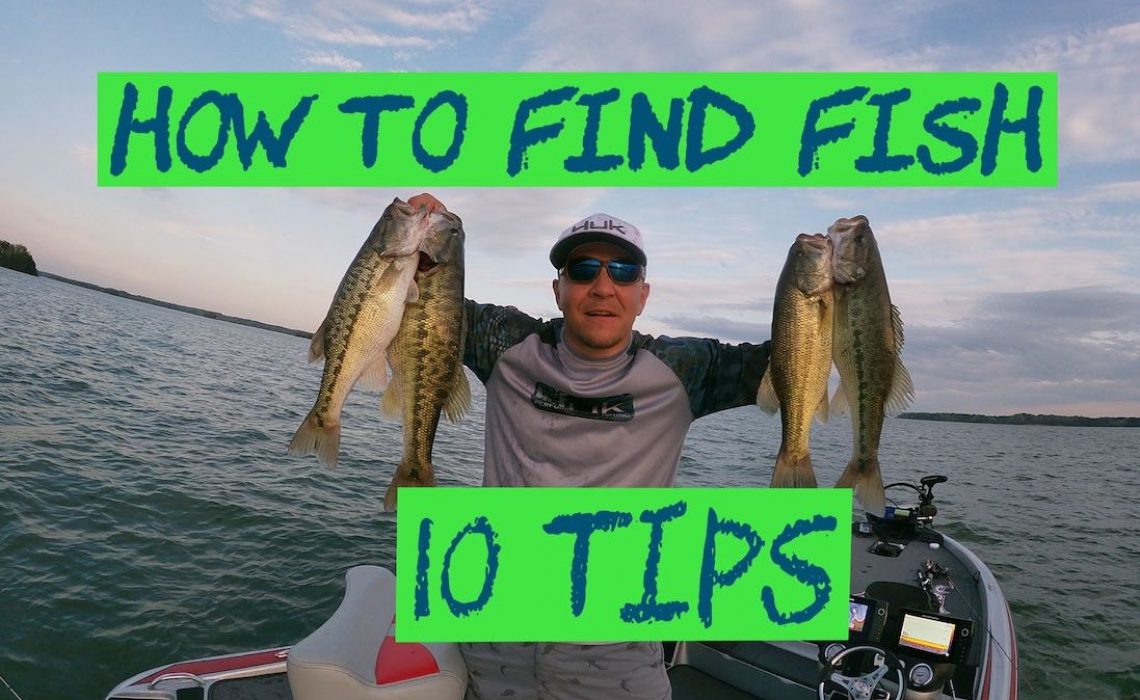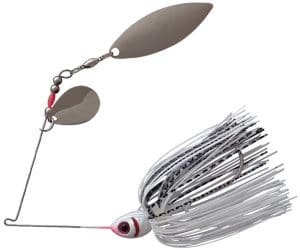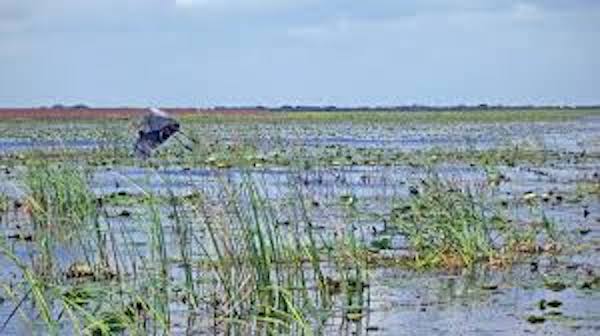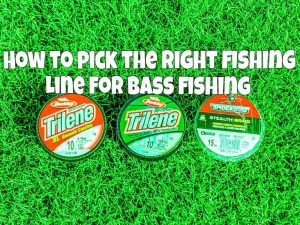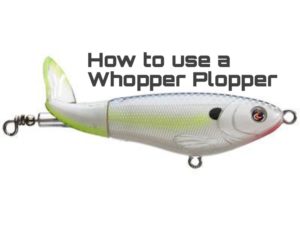When I started to improve as a Bass angler is when I realized I need to find the fish before I make a cast! Everyone has their favorite fishing spot. That spot where you caught a bunch of fish last spring and they were schooling like crazy!!! And now because you had that great day you go to that spot every time you go out and see if they are there again! Do not fish spots. Fish conditions, the time of year and find fish before you make a cast. Look for the motherload of fish!!
1. Be Patient
This one will apply a little more to bass anglers fishing from a boat with electronics on it. Whether I am at a new lake or my home lake I scan around and use my electronics. Right now it is wintertime in Georgia and I fish Lake Lanier a lot. Before I even make a cast I check the ditches for two things. First I look for baitfish and second I look for fish. Whether you have a boat, kayak, or fish from the bank you will want to optimize your time by not making a cast until you find the fish. The rest of these steps will delve more into how you do that. The first rule of thumb…..Don’t make a cast until you find them.
2. Have Electronics
Instead of buying 20 fishing combos and all the lures in the world save your money. Save until you have enough to buy some electronics for your bass boat, john boat or kayak. It is the most crucial thing I have and has been huge for me catching tons of fish. Garmin, Humminbird, and Lowrance are the biggest players in the game. I personally run Humminbird on my boat. What I love about them is their side scan. The picture is so clear and I can see what is out to the right and left of me and use sonar or down scan to see what is underneath the boat.
What I LOOOOOOVE about Garmin is their Panoptix Livescope . This is the most state of the art technology on the market right now. It shows you the fish live. Meaning you can look down at your screen and see that fish are swimming around in front of your boat at 2:00 and suspended in 15 foot of water. You can see each fish. It is saying, “cast over here dummy!” Once you cast you will even be able to see the fish following your bait. It is absolutely an amazing piece of technology and will be the next addition to my boat.
Story Time!
Learn the electronics and trust what they are telling you. My buddy Steven and I were fishing Lake St. Clair in Michigan and we were cruising around eating our lunch. I saw what looked like a ton of fish. It must have been 20 fish I counted on side scan. I told him to cast out to the right and stopped the boat right away and used my talon to anchor us down. As soon as we cast out within three seconds our rods were doubled over. Those fish were aggressive and ready to eat. We did not move the boat for an hour. We even got on Facebook live to show our friends how many fish we were catching. It was awesome. That is the impact that good electronics have. 90% of the fish are not on the banks. You have to see what is under the water and target those fish that are way offshore.
3. Find the Bait Fish
You may have heard this saying and it still holds true today. Find the bait and the fish will not be far behind. On your electronics, you are looking for a cloud. These clouds are going to be your baitfish. You can also look at the top of the water and see them swimming around sometimes. If you see fish schooling that is an obvious sign that you have baitfish around. Also, remember if you see dead bait on the water then grab it and try and match the size with one of your lures. The best way to find them is to have those electronics as we talked about above.
4. Trust the Birds
Whether you have electronics are not you can also use mother nature to tell you where they are. The birds feed on baitfish almost all day. Eagles will swoop down and catch fish. Heron is a great indicator. Those guys don’t ever take a break and are always on the hunt. Have you ever seen a heron sitting on a point with his head pointed down at the water? That is because he knows the baitfish are there for some reason are another.
5. Know the seasonal patterns

Part of finding the fish is knowing where to look. You will have to do some research on the area you are fishing and what the fish are doing during that time. So I know if I am fishing Lake Lanier in the winter I am going to look a little deeper and in the ditches. If I fish it in the summer I am going to fish offshore brush piles and humps. If I fish in the spring I am going to be looking shallow around banks and docks. If I fish during the fall I am going to focus on rock and points. All of this can change if you are fishing Lake St. Clair or Lake Guntersville. Reach out to people on Facebook groups and ask questions to help you know where you should start looking. Knowing what fish do during different seasons is very important.
6. Use Search Baits
I love using search baits. You may be asking what in the world is a search bait. A search bait is a bait that you can move fast on the retrieve and cover a lot of water with.
All of the above are great examples of search baits. Now just because you don’t catch a fish on these does not mean that there is not a lot of fish to be caught. If you get a small blow up on your topwater or a bass knocks your spinnerbait than there is fish present. However, they may not be crazy about what you are throwing. This would be a good idea to maybe switch to a worm or jig. Let the fish tell you what they want. This is a great one for people fishing the bank that will not be able to use electronics.
7. Find the Structure/Ambush Points
This should probably be an obvious one. Remember the bass love structure. Different bass love different things at different times. WHAT???? Let me explain. So largemouth bass love the thick cover. More than any other species of bass. You can find them in grass, lily pads and logs just to name a few. If you see guys flipping in Florida they will flack back as far back as they can in the reeds and pull out Giant bass from that stuff. Spotted bass love brush piles and deep timber. Not to say that you would never find them buried in the grass, but they will be closer to deep water at all times. Smallmouth love grass also but they also love rock and gravel.
You also want to look for areas that are ambush points. A ledge is an excellent place to start. Maybe a long point with deep water on either side of it. These places bass love to set up and wait for baitfish to be pushed to them so they can ambush the bait? Bridges create a funnel and with the right wind or current can create an excellent ambush point for bass. Brush piles off sore are great because they attract baitfish anyway and bass can hide and come out to feed. Rocks are great (especially for smallmouth) because they can camouflage themselves with the rock and pounce when the bite comes their way. So look for some of these things and there is a good chance that you will find some bass.
8. Watch Your Bait for Followers
You need to watch your lure especially as it approaches the bait. So many times we could help ourselves out by just paying closer attention. Have you ever been reeling in that search bait like spinnerbait and at the last second you see a bass turn away? That means that there is fish there and they may not be crazy about your bait or they want you to reel it a little slower or let it get a little deeper. When that happens to me I usually like to cast a different bait out like a jerk bait to see if I can get a strike. After that, I may throw out a worm and see if that is what they want. The first step is finding the fish. Once you do that then you need to figure out what they want. This is not going to work in dirty muddy water. However it also important to know that even if it is overcast out you should have polarized sunglasses on your face at all times. They can help you seen down in theater so much so you can catch those needy followers trailing your baits. I am a huge fan of Costa’s and you will hardly ever see me fishing without them.
9. Watch Other Anglers
Watch what other people are doing. I am not saying to fish on top of other people. If you see fifteen boats fishing an area there is probably a good reason they are doing that. Maybe run around the outside perimeter and see what kind of structure they are fishing or the depth. You can drop a waypoint and come back to it on another day. If you see a boat in one spot for a very long time when they leave, go over and check out what they were fishing so maybe you can duplicate that. Take notice of what others are doing and the depths they are fishing. I also like to look at the side of their boats to see if they are local. The locals usually have the best idea of what is going on in the fishery.
10. The Wind is Your Friend
I know I know. Everyone wants perfect conditions and light wind when they are fishing. However, the wind can be great for helping you locate the fish.
Storytime!!
When I was younger my father and I were driving over a bridge and the wind was blowing like crazy that day. On one side of the bridge, the waves were crashing against the rock and it was rough sea’s. The other side was calm and just had a little ripple and looked awesome. He asked me, “Lee what side is the better side to fish?” I answered and pointed to the side with the pretty water and no wind. He said, “Nope all the fish are on the rough side, where the baitfish are being pushed up against the rocks and are trapped.” It is a lesson that I have used over and over to catch a lot of fish.
The wind is your friend and you have to use those areas that are getting beat by the wind to help you catch more bass. When fishing these conditions I would whip out my search baits like we talked about above and go to work.
Alright, guys now you have 10 ways to find fish. Once you find them it is your job to catch them and figure out what they want. A great example of that is what I did down below a couple of months back. I was dialed in to where the fish were on secondary points and I knew exactly what they wanted.
Tight Lines,
HOOK’D ON BASSIN

